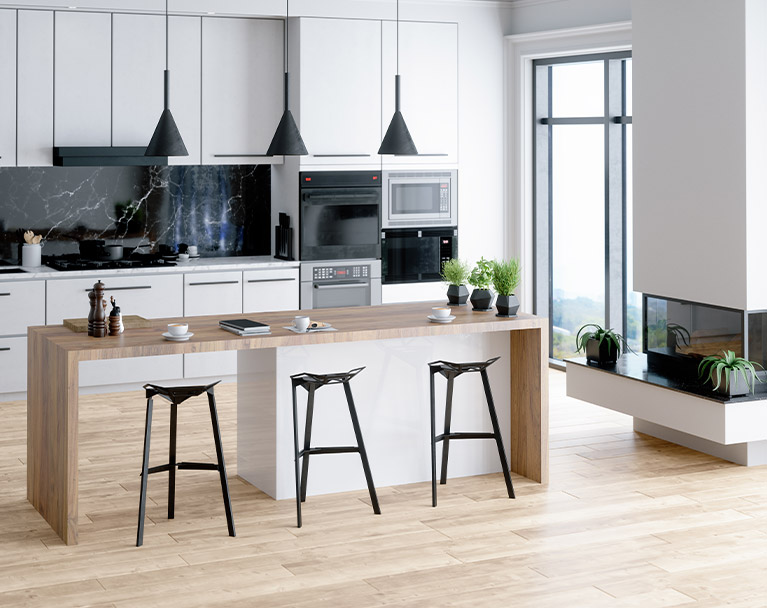1) Could now be a good time to buy in London?
Hannah: I’m very positive about the London outlook.
In central London, we feel there will be slightly fewer buyers in the market. But the next six months will provide a really good opportunity to capitalise on those vendors who are actually selling.
In terms of pricing, the outlook has been pretty flat, or falling by about 2%. So negotiate firmly.
2) Which areas seem the most desirable among purchasers?
Hannah: Post-Covid, for that space factor, quality family homes were popular. And that’s not changing. We saw a meteoric rise of best-in-class houses trading in areas like Notting Hill, Holland Park, Kensington and Chelsea, up north to St John’s Wood and Hampstead. And that interest is still there. The flat market, which suffered a lot during the pandemic, has come back into the picture, too.
3) Which seem the best value?
Hannah: I love Highgate. But it’s a much more competitive part of North London compared to neighbouring Hampstead. There is access to the woods, park and a golf course, and the area has wonderful architecture – a real mix of new-build properties and Georgian architecture.
Properties within the Royal Borough of Kensington and Chelsea are also highly desirable. You’ve got a good number of really attractive matching blocks which overlook pretty squares. It’s really easy to get on the A4. And while the area has looked a little tired in the past, it’s going through a huge gentrification process.
4) How do you source properties for your clients and ensure they’re getting them at an appropriate price?
Hannah: We’re ranked as one of the top ten buying agencies in the UK. Because of our excellent track record and reputation, about 80% of the properties we acquire for our clients are firmly off-market. We have a huge database, plus links with many estate agents and intermediaries such as architects and interior designers so we can identify all the properties that might be relevant to our clients.
Chloe: A big part of it is how we present our clients. We showcase them as the most committed and focused buyers on the market. A big part of that is on-boarding them with one of our panel lawyers and ensuring they have the financing in place right at the outset of the property search.
5) What proportion of domestic buyers and international buyers are you seeing?
Hannah: Last year about 60% of the properties we acquired were for our domestic clients. This year that has completely flipped compared to pre-Covid. We see a lot of interest from buyers in America, Hong Kong, the Middle East and Europe.
6) What are the benefits and disadvantages of a new-build property?
Neal: With new-build properties you often pay an annual premium, so you end up paying a higher price for that property over time. The problem then is that that premium erodes over time. Clearly offsetting this is the fact that the vast majority of UK housing stock is very old, and the energy efficiency of it is very poor.
Hannah: Older properties tend to be less efficient to run. But their appeal doesn’t falter. A lot of people buy in London for its rich history and architecture. We would never dissuade a client from looking at a new-build investment, but it is quite important to look at smaller schemes. A constrained supply will better support an investment on exit. New-build flats can have world class facilities such as spas, gyms and pools, but come with costly maintenance fees. It’s important to have a good understanding of the service charge and ensure rental income will cover it.
7) What have been the barriers to investment for people who are considering purchasing buy-to-let properties?
Neal: It’s clearly been a difficult period for buy-to-let. The sector hasn’t had much support from either side of the political divide. However, first-time buyers can afford to replace the investors.
Something we’re only just beginning to see the effect of is what higher interest rates mean for investor yields. Central London yields are now under 4%, whereas they had been under 3%.
8) In the next 18 to 24 months, when might be the best time to put a property on the market?
Chloe: So much depends on the property, the area, even the season. But we recommend looking at neighbouring properties, what they sold for and how that was taken. The spring and autumn market is the best in terms of demand but there will also be more competition. Getting three or four valuations is a good idea, as not only will buyers get an idea of value but also how long agents think it will take a property to sell.
9) How can buyers increase property value?
Hannah: As a general rule, anything that adds square feet to a property will add value. A side or loft extension makes sense. One point that is more contentious is whether buyers should add a basement or not. The floor space needs to be large enough to warrant a basement.
Also, it’s not a great start with neighbours to just inflict a material build on them. That said, a basement can be a good way to add square feet, though there won’t be much natural light. Basements can also create a bottom-heavy house.
Buyers should think about their resale market before undertaking any work and lean on their architect for advice. Bringing in an external project manager will ensure there isn’t any problematic overlap with multiple large projects. Buyers should also let their lender know before carrying out any work and take out the necessary insurance.
10) What are the current mortgage requirements of some buyers?
Louise: Despite interest rate volatility, some people are comfortable with paying a premium for the right properties given the current stock shortages. We are seeing this activity on investment property purchases.
Mortgage solutions can offer flexibility, either through relatively high loan-to-value ratios, flexible repayment structures or a combination of both.
Want to discuss your clients’ options? Get in touch today.
To learn more about our mortgage offering, talk to a private banker or complete our callback form.
Important information:
This webinar was recorded in February 2023. Investec Bank plc provides this media for information purposes only. No reliance can be placed on its content and Investec Bank plc does not accept any liability or responsibility directly or indirectly for any losses as a consequence of consuming this media. You should always seek independent professional advice before making any financial or investment decision.
Browse articles in



